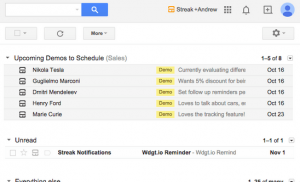
Jamie Hale, CEO and cofounder of digital life insurance firm Ladder, looks like he’s perpetually smiling. Even when he dives into statistics, there’s a smile tucked into his voice.
When Hale was 11, his father passed away unexpectedly. His father’s life insurance policy meant he and his mother and brother were able to stay in the same community and continue to be supported by family and friends.
“Life insurance gave us emotional resiliency and it gave us financial resiliency,” he says. Hale went on to Harvard Business School and a career in investment banking. However, he wanted to combine his financial know-how with making an impact. Around the same time, his cofounder Jeff Merkel was leaving his job at Google and struggling with the process of getting life insurance. Hale; his wife, Laura; Merkel; and Jack Dubie, a former Dropbox engineer, decided to found Ladder in 2015.
Life insurance has been sold in the United States since the 1760s, but it’s been slow to digitize. According to a 2017 report from McKinsey & Company, 90% of life insurance policies in the United States are sold through agents or a broker instead of directly from a company, and for traditional life insurance companies, up to 40% of their expenses are tied up in their core processes, such as relying on commissions to agents, which allow less room for flexibility.
Fast-forward to 2020 and 54% of Americans were covered by life insurance, but obtaining life insurance can be a maddeningly slow and inscrutable process. Typically, after applying for life insurance, each individual has to be underwritten or assessed for their level of risk so the company knows how to price its policy—a process that can take up to a couple of months. Ladder is among a group of digital life insurance companies such as Haven Life Insurance, Bestow, and Ethos Life, that are trying to disrupt the life insurance industry by offering digital underwriting that allows customers to be approved in minutes.
In particular, Ladder stands out for offering flexible coverage. Customers can easily add or reduce the amount of coverage they want, and see their payments increase or reduce accordingly—although as a caveat, customers who want to increase their coverage must reapply. “Life insurance can be very inflexible,” Hale says. “It can be challenging if you want to reduce coverage. We wanted to solve that problem.”
He notes that it is harder for traditional companies to offer this kind of flexibility because so much of their costs are tied up in the underwriting process. Hale credits Ladder’s flexibility with its high customer retention rate. “We’ve only lost 3 to 4% of our customers a year,” he said.
Since the start of the pandemic, Ladder has seen an increase in customers, particularly millennials who are looking to protect their families during uncertain times. Late last year, the Palo Alto firm announced it had raised $100 million in Series D funding from backers led by Thomvest Ventures and OMERS Growth Equity. In 2022, its year-over-year growth has tripled. Ladder has issued over $42 billion in coverage, and its employee headcount has more than doubled since the pandemic started.
Today, Hale’s biggest challenge is growing Ladder while maintaining a focus on its employee culture and processes. “Life insurance is an act of love,” he says. “You don’t do it for yourself. You do it for your family.”
(21)
Report Post




